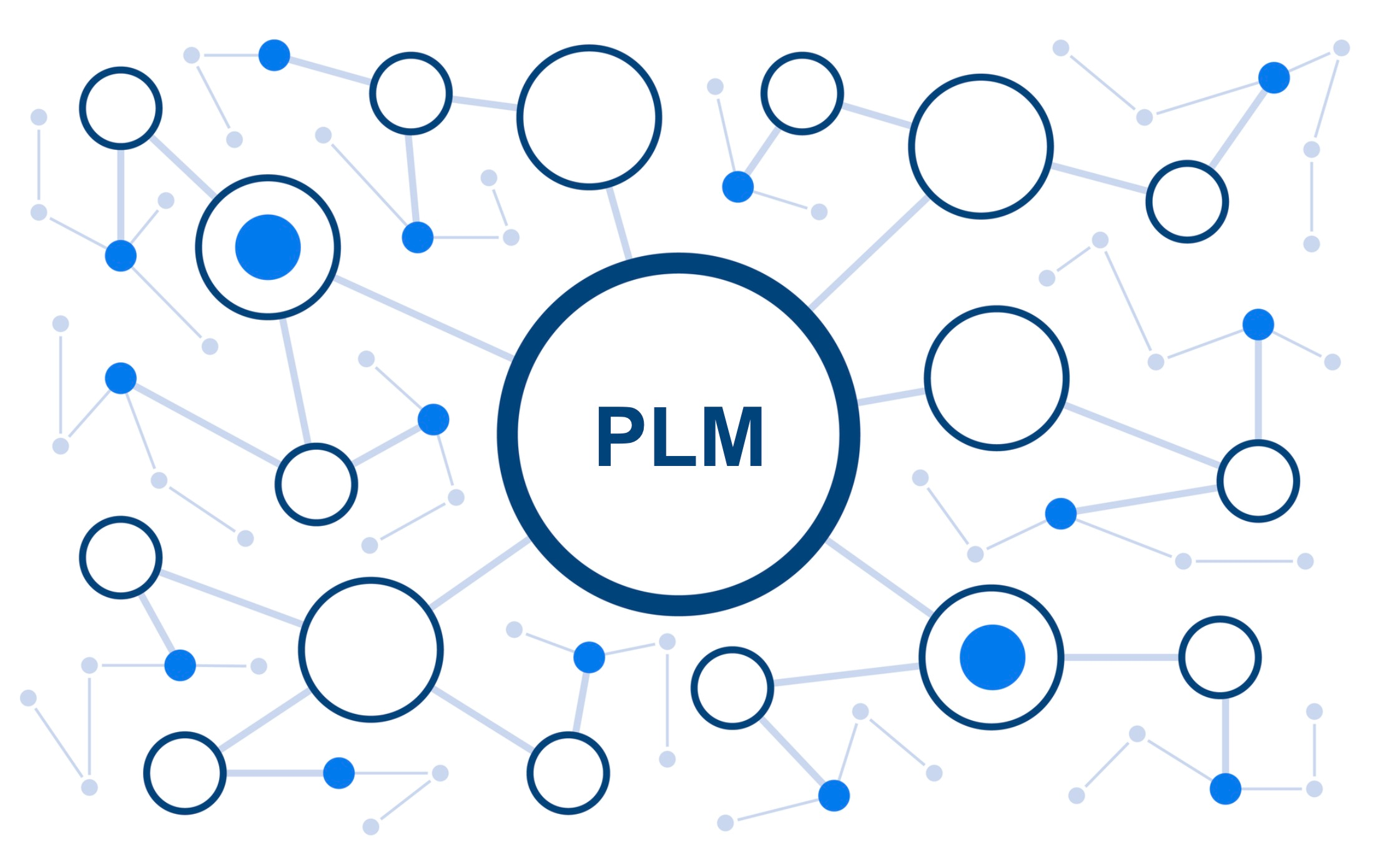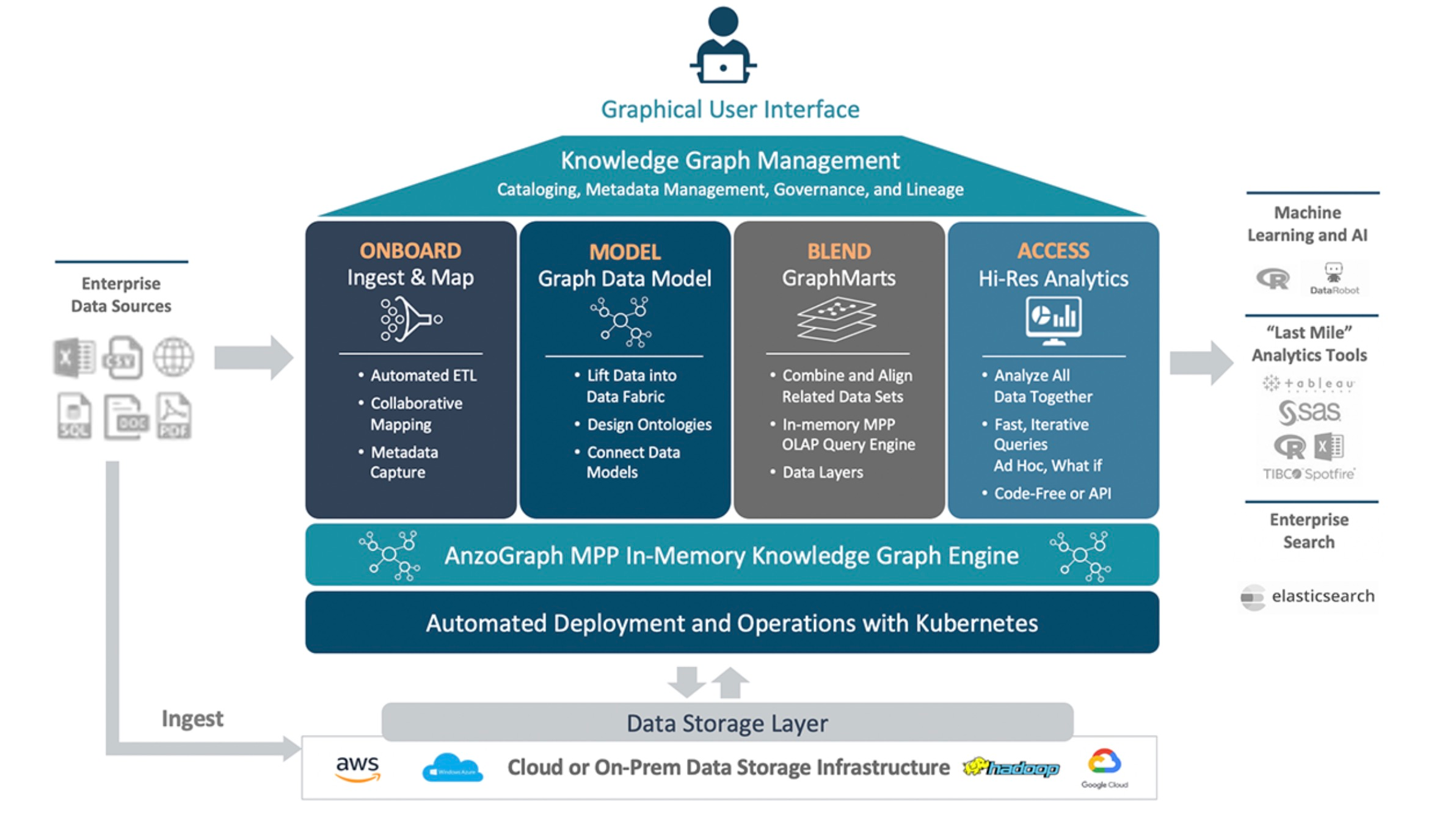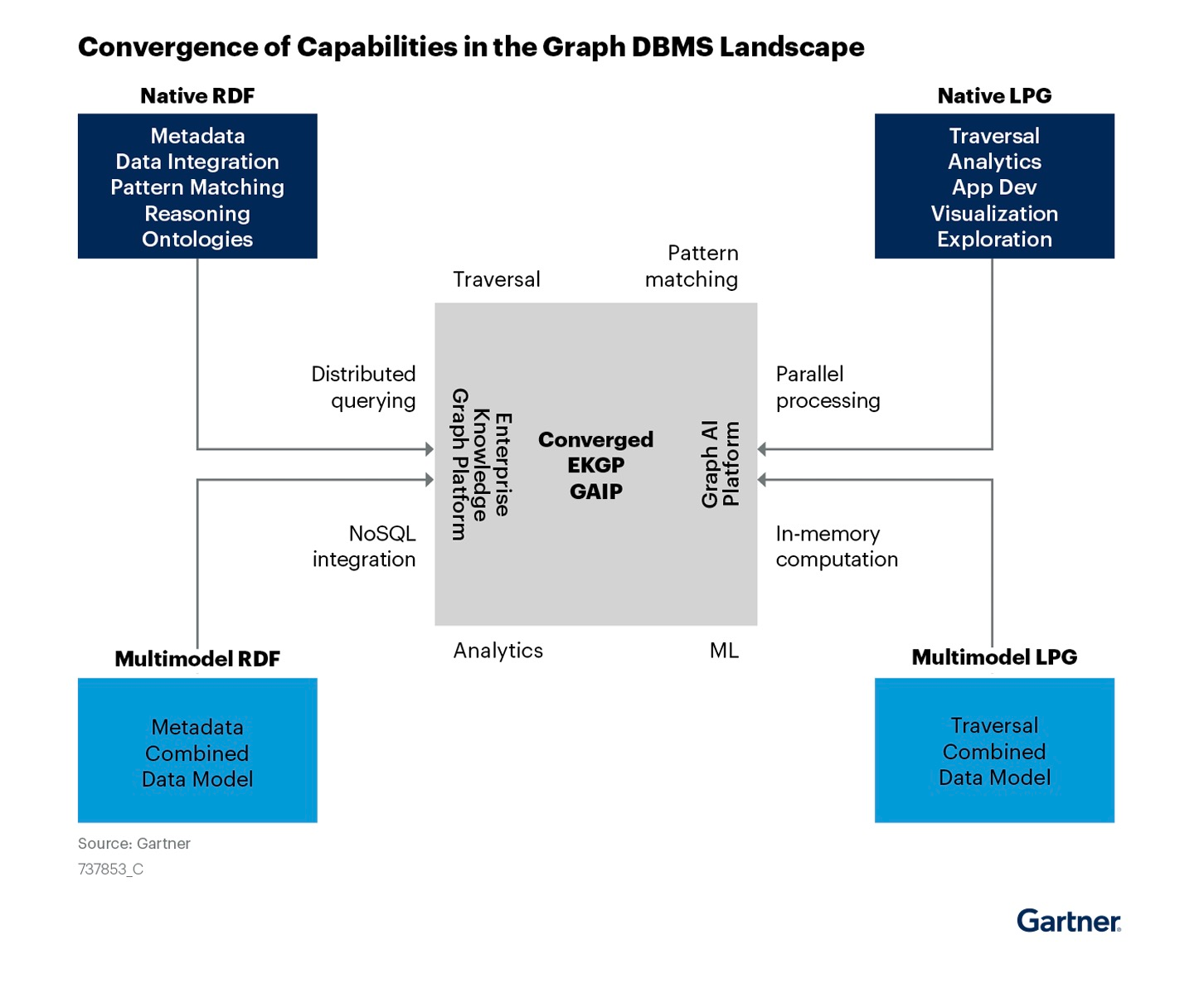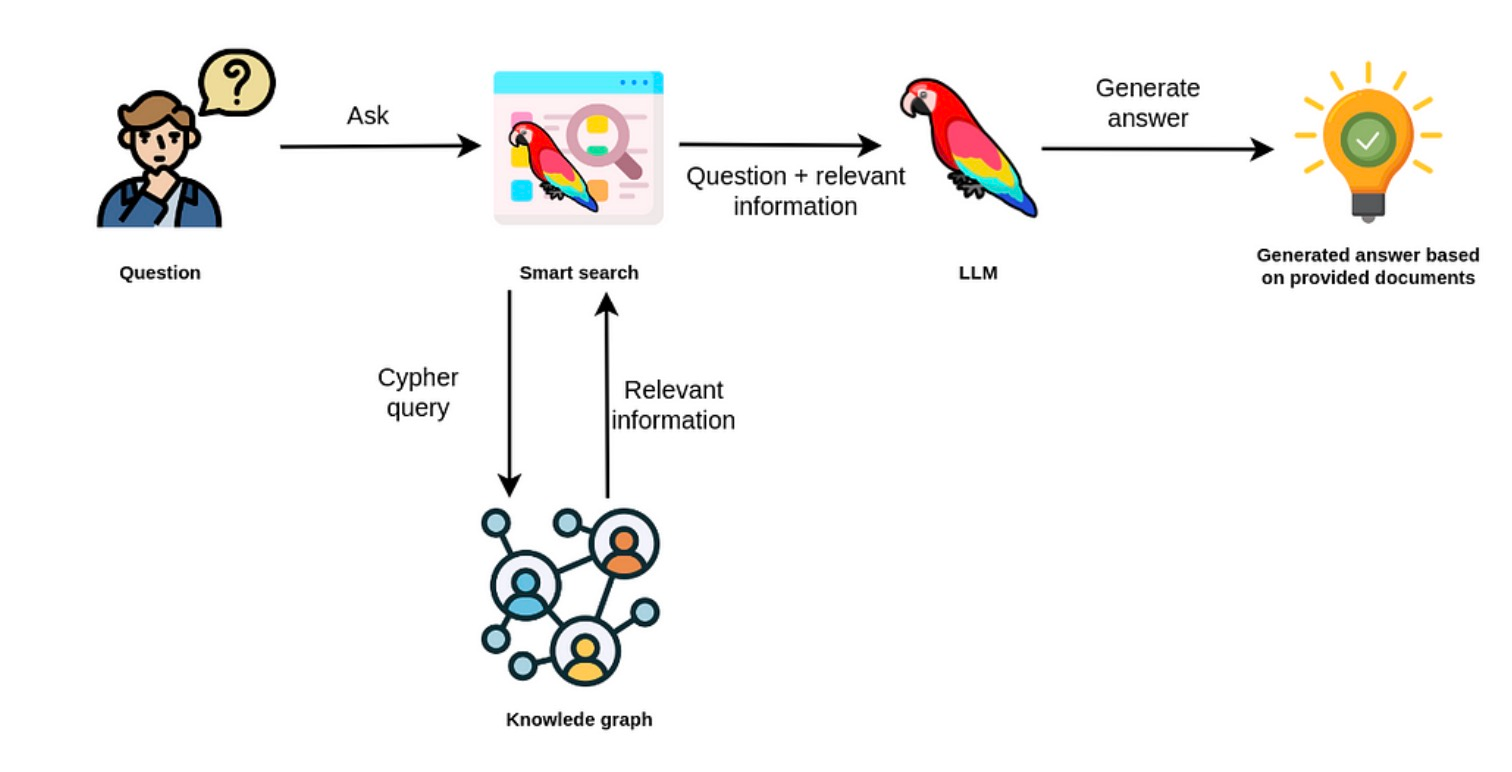
My attention was caught by the Cambridge Semantics acquisition by Altair, a company I’ve followed since the early 2000s when I was first introduced to semantic web technologies. Cambridge Semantics’ core innovation, the Anzo Graph database and platform, has always been an interesting innovation across multiple type of databases used in semantic web (RDF stores) and other graph database engines. My long time interest in semantic technologies, graph model, connected data, knowledge graphs, graph data science and later graph databases was fueled by a searching a better way to manage information used in engineering and manufacturing, finding a better path to organize product information and tools that can help engineering, manufacturing and construction companies to do so.
ANZO Graph
The following picture can tell you everything you should know in a single screenshot. ANZO Graph is an in memory graph database and set of integration tools.

If you want to zoom out your graph database knowledge, you can check the graph database landscape by Gartner. Originally, graph databases were classified between RDF storages and LPG (Label Property Graph databases).

There is a growing standardization in this space now. One of the most notable event is adoption of GQL language by ISO. Check my article Graph Databases, GQL Standard and Future of PLM data layers.
The acquisition by Altair Engineering is intriguing because it highlights a growing interest in graph technologies within the engineering and manufacturing data management domain.
The Growing Importance of Data Technologies in Engineering and Manufacturing
Engineering and manufacturing industry vendors are increasingly focusing on data technologies. Data represents the power of analytics, decision support, and advanced models such as digital twins and digital threads. Questions about usage analytics and AI are now frequent topics in boardrooms. Companies are concentrating on helping customers extract valuable intelligence from their data. This acquisition underscores the importance of these technologies in the modern industrial landscape. Here are a few examples of usage graph databases in CAD and PLM technologies:
Autodesk Graph data and GraphQL for Autodesk Platform Services
Dassault Systemes NetVibes use case for graph data index and search
OpenBOM uses Neo4j to build a foundation of product knowledge graph
Ganister PLM graph powered application builder
The Power and Flexibility of Graph Technologies
Graphs provide a powerful mechanism for data modeling, especially in engineering disciplines that demand flexible and robust data management tools. As the complexity of product data grows, companies are searching for better tools to build comprehensive product models. Graph technologies are among the best platforms available, offering unparalleled flexibility and power in data representation and analysis.
Check my earlier blog about benefits of graph models for different use cases in PLM:
3 Benefits of Graph Based Digital thread product models for PLM-ERP integrations
Why Do You Need A Graph Model To Embrace PLM Complexity?
How to build product model for digital thread
The Connection Between AI, LLM, and Graph Technologies
There is a direct connection between the growing interest in artificial intelligence (AI), large language models (LLM), and graph technologies. Graph databases can efficiently handle the complex relationships and vast amounts of data required by AI and LLM applications. This synergy makes graph technology an essential component in the development of intelligent systems and advanced data analytics.
If you’re interested more in this topic, I recommend you to read Knowledge Graphs & LLMs: Multi-Hop Question Answering by Tomaž Bratanič from Neo4j.

Future Trends in Engineering, CAD, and PLM
I expect a growing interest from engineering, CAD (Computer-Aided Design), and PLM (Product Lifecycle Management) vendors in using graph technologies for data modeling, ontology building, data mapping, analytics, and intelligence. The flexibility and power of graph data models can significantly improve how these vendors manage data, leading to better decision-making and more innovative product development processes. Check my Graph Maps the Future of PLM article on Engineering.com.
Graph data models and graph databases can provide a new level of flexibility and efficiency for Product Lifecycle Management (PLM) development. Graph data models are a structural representation of data that highlights entities and their relationships. Graph databases are a type of database that uses graph structures for semantic queries. Graph databases can be valuable for PLM because they can:
- Manage complex data: Graph databases outperform relational databases in the ability to manage multiple data points and complex data elements in a flexible way.
- Query data: Graph databases can provide a powerful way to query data.
- Retain semantics: Graph databases can retain the rich semantics of the data
What is my conclusion?
The acquisition of Cambridge Semantics by Altair Engineering is one of the examples to demonstrate the increasing importance of graph technologies in modern data management. The flexibility of graph data models makes them a powerful tool for CAD and PLM vendors, enabling them to manage complex product data more effectively. As interest in AI and advanced data analytics continues to grow, graph technologies will play a crucial role in shaping the future of engineering and manufacturing data management.
Just my thoughts…
Best, Oleg
Disclaimer: I’m co-founder and CEO of OpenBOM developing a digital-thread platform with cloud-native PDM & PLM capabilities to manage product data lifecycle and connect manufacturers, construction companies, and their supply chain networks. My opinion can be unintentionally biased.












